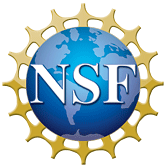Diagnostic and model dependent uncertainty of simulated Tibetan permafrost area
To Access Resource:
Questions? Email Resource Support Contact:
-
opensky@ucar.edu
UCAR/NCAR - Library
| Resource Type | publication |
|---|---|
| Temporal Range Begin | N/A |
| Temporal Range End | N/A |
| Temporal Resolution | N/A |
| Bounding Box North Lat | N/A |
| Bounding Box South Lat | N/A |
| Bounding Box West Long | N/A |
| Bounding Box East Long | N/A |
| Spatial Representation | N/A |
| Spatial Resolution | N/A |
| Related Links | N/A |
| Additional Information | N/A |
| Resource Format |
PDF |
| Standardized Resource Format |
PDF |
| Asset Size | N/A |
| Legal Constraints |
Copyright 2016 Authors. This work is distributed under the Creative Commons Attribution 3.0 License. |
| Access Constraints |
None |
| Software Implementation Language | N/A |
| Resource Support Name | N/A |
|---|---|
| Resource Support Email | opensky@ucar.edu |
| Resource Support Organization | UCAR/NCAR - Library |
| Distributor | N/A |
| Metadata Contact Name | N/A |
| Metadata Contact Email | opensky@ucar.edu |
| Metadata Contact Organization | UCAR/NCAR - Library |
| Author |
Wang, W. Rinke, A. Moore, J. Cui, X. |
|---|---|
| Publisher |
UCAR/NCAR - Library |
| Publication Date | 2016-02-05T00:00:00 |
| Digital Object Identifier (DOI) | Not Assigned |
| Alternate Identifier | N/A |
| Resource Version | N/A |
| Topic Category |
geoscientificInformation |
| Progress | N/A |
| Metadata Date | 2025-07-11T20:51:19.697990 |
| Metadata Record Identifier | edu.ucar.opensky::articles:18578 |
| Metadata Language | eng; USA |
| Suggested Citation | Wang, W., Rinke, A., Moore, J., Cui, X., Ji, D., Li, Q., Zhang, N., Wang, C., Zhang, S., Lawrence, David M., McGuire, A., Zhang, W., Delire, C., Koven, C., Saito, K., MacDougall, A., Burke, E., Decharme, B.. (2016). Diagnostic and model dependent uncertainty of simulated Tibetan permafrost area. UCAR/NCAR - Library. https://n2t.org/ark:/85065/d7nz897k. Accessed 04 December 2025. |
Harvest Source
- ISO-19139 ISO-19139 Metadata

